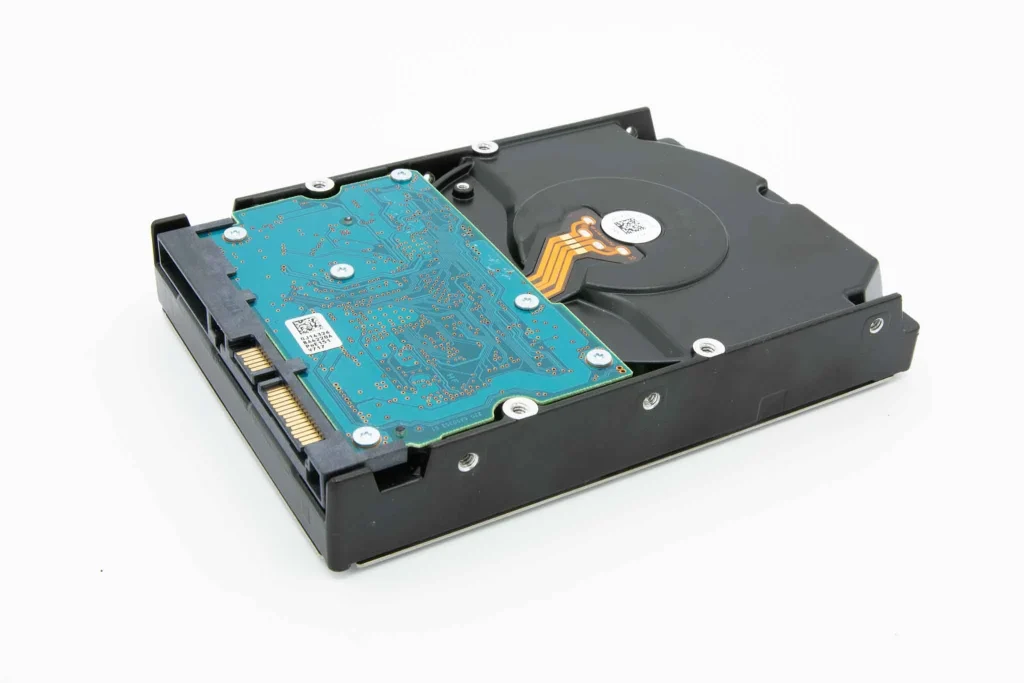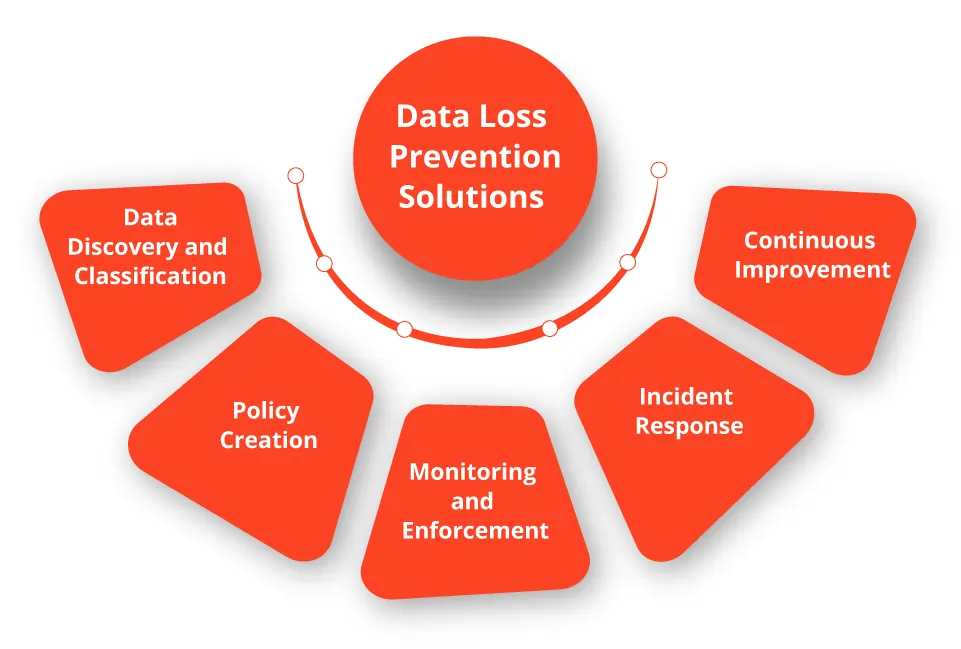Data loss involves the accidental or unintended deletion of digital data. It can occur for various reasons, such as hardware failure, software corruption, human error, or malicious attacks.
Losing crucial data can lead to severe consequences, from financial losses to irreversible harm to reputation and legal responsibilities. Prioritising data loss prevention should be a key concern for any organisation or individual looking to safeguard their information. It is vital to have systems that routinely back up essential data.
What is Data Loss
Data loss occurs when data stored within a system or organisation is accidentally or deliberately destroyed, corrupted, or inaccessible. It happens when data in computer systems gets damaged, deleted, or inaccessible due to hardware failure, software issues, viruses, or human mistakes. This lost data can span from personal files such as photos and documents to crucial business data like customer databases, financial records, and proprietary research.
Organisations must establish robust backup and recovery plans to prevent data loss, maintain redundant copies of data, employ security measures like encryption and access controls, and promote a culture of data protection and awareness among employees.

This involves regular backups, storing data offsite, encrypting sensitive information, and actively monitoring for suspicious activities or potential threats. Additionally, organisations should regularly assess risks, educate staff on cybersecurity best practices, and stay updated on evolving threats and technologies to mitigate the risks associated with data loss effectively. The consequences of data loss can be serious, including financial losses, legal liabilities, damage to reputation, and operational disruptions.
Types of Data Loss
Data loss can stem from various reasons, from human oversight to technical malfunctions. Here are some common triggers of data loss:
Human Error
Accidental deletion, improper handling of data, or unintentional overwriting of files by users can lead to data loss. Human error is one of the most common causes of data loss in various environments.
Hardware Failure
Malfunctions in storage devices like hard disk drives or solid-state drives (SSDs) can lead to data loss, often caused by mechanical failures, electrical issues, or physical damage to the hardware. Our approach is to provide detailed explanations that simplify complex processes, maintaining a focus on precision and technical expertise. Through narrative storytelling, we subtly convey empathy by understanding clients’ challenges in such situations, ensuring our clients feel assured of our competence and reliability.

Malware and Cyberattacks
Viruses, ransomware, and other forms of malware can infect systems, encrypt or delete data, or steal sensitive information, causing significant data loss.
Cyberattacks like hacking or phishing can also result in unauthorised access and data breaches.
Software Issues
Software bugs, glitches, or compatibility issues can cause data loss. System file corruption, operating system crashes, or application errors may also make data inaccessible or corrupted.
Environmental Factors
Events like floods, fires, earthquakes, power outages, or extreme weather conditions can damage infrastructure, including servers and storage devices, leading to data loss. Environmental factors like temperature fluctuations, humidity, or exposure to magnetic fields can also contribute to data loss.
Accidental Deletion
Perhaps the most human-related cause of data loss, accidental deletion occurs when files are mistakenly removed, or storage devices are improperly formatted without proper backup.This type of data loss is especially prevalent in environments where data management practices are not strictly enforced, or backups and version control systems must be utilised more.
What is Data Loss Prevention
(DLP) Data loss prevention is the strategy and implementation of policies, procedures, and systems to protect sensitive data from loss, compromise, or exposure. It includes identifying sensitive data, categorisingit by sensitivity, regulating access, and monitoring usage within an organisation or network.
DLP solutions include encryption, firewalls, intrusion detection systems, and antivirus software to safeguard data from external threats. Moreover, DLP strategies focus on fostering a security-conscious culture within an organisation through educating employees on secure data handling practices and enforcing data protection policies.
Organisations should implement a comprehensive DLP program to mitigate the risks of data loss, comply with regulations like GDPR or CCPA, and maintain customer trust and satisfaction. It should include regular data backups, testing recovery procedures, implementing appropriate security measures, conducting risk assessments and audits, and providing ongoing employee training and awareness programs.

Best Practices for Data Loss Prevention
Data Loss Prevention (DLP) techniques comprise a variety of strategies and technologies aimed at protecting sensitive data from unauthorised access, disclosure, or loss. If you’re curious about how to prevent data loss, it’s essential to integrate multiple layers of protection to ensure your data’s security. Some key DLP techniques include:
Regular Backups
Regularly back up critical data, including system settings, applications, and databases, using cloud-based solutions or physical storage devices
Encrypt Sensitive Data
Encryption converts readable data into an unreadable format, making it challenging for unauthorised parties to access or decipher sensitive information.
Establish Strong Access Controls
Enforcing stringent access controls prevents unauthorised users from reaching sensitive data. Organisations should limit access to only authorised personnel and regularly monitor for suspicious activities.
Stay Updated on Security Measures
Organisations must regularly update security measures to guard against new threats. This includes installing updates and patches for systems, firewalls, antivirus software, and other security tools.
Educate Employees on Cybersecurity
Employees play a crucial role in data loss prevention. Organisations need to hold frequent training sessions to educate employees about cybersecurity best practices, including password management, recognising phishing attempts, and following correct data handling protocols.
Perform Regular Risk Assessments
Regular risk assessments help organisations identify system and process vulnerabilities. This allows them to implement measures to prevent data loss proactively.
Have a Data Breach Response Plan
Organisations should have a comprehensive response plan for data breaches. This includes steps to contain the breach, assess the damage, notify affected parties, and implement measures to prevent future incidents.
Significance of Professional Assistance
If initial attempts to recover data are unsuccessful, you should seek professional assistance for a more effective solution. Reliable data recovery services have the expertise, experience, and specialised equipment needed to address complex data loss scenarios that can be difficult for standard recovery methods.

These professionals operate in controlled environments to increase the likelihood of successful recovery, addressing various issues from physical hard drive failures to advanced software corruption.
PITS Global Data Recovery Services offers a trusted solution for individuals facing complex data loss scenarios. With a proven track record in data recovery from various storage devices, our team is dedicated to providing efficient data recovery services.
Contact PITS Global Data Recovery Services for insights on our specialised data recovery solutions and discover how we safeguard your digital assets. Our expertise and proficiency ensure your data is in safe hands.
FAQ about Data Loss and Prevention
What causes data loss?
Data loss can result from different factors, including hardware failures, human error, software malfunction, malware and cyberattacks, and natural disasters. Each cause requires specific preventive measures to safeguard data effectively.
What are data leaks, and how do they differ from data loss?
Data leaks occur when data is transmitted without authorisation from an organisation to an external recipient. The key difference is intention; data loss can be accidental or intentional, while data leaks are often considered to involve the deliberate dissemination of data without authorisation.
What are some effective data loss prevention techniques?
Effective techniques include:
- Data classification.
- Employing encryption.
- Implementing access controls.
- Developing and enforcing DLP policies.
- Securing endpoints.
- Continuously monitoring networks.
- Conducting employee training.
- Maintaining data backups.
Is it necessary to have professional data recovery services?
While many data loss scenarios can be mitigated with robust prevention strategies and in-house recovery efforts, complex situations may require the expertise of professional data recovery services. These experts have advanced tools and controlled environments that maximise the chances of successful recovery.
How often should data backups be performed?
The frequency of data backups should be determined based on the organisation’s data criticality and operational needs. However, a regular backup schedule, such as daily or weekly, is recommended to ensure data resilience and quick recovery during loss.


